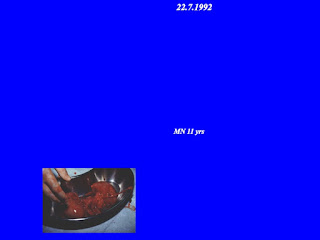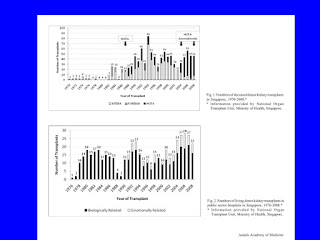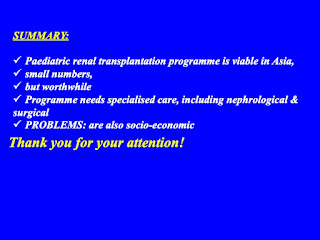These are educational slides from my lectures. i have videos of some recent lectures on my youtube channel: https://youtube.com/user/leichangmoh
李長茂Dr Clarence Lei Chang Moh
- Clarence Lei ChangMoh
- Dr Clarence Lei Chang Moh, FRCS Urol (MMC No.: 024209, NSR 123533) Adjunct Professor, Universiti Malaysia Sarawak, Honorary Consultant SGH, Heart Centre Sarawak, Hospital KL; Consultant Urologist(Adult and Paediatric), Kidney, Urology, Stone, Prostate & Transplant) Normah Hospital, Petra Jaya, 93050 Kuching, MALAYSIA Tel: +6082-440055 e-mail: clarencelei@gmail.com telemedicine welcome; email or whatsapp+60128199880; standard charges RM235 for first & RM105 subsequent
Monday, November 9, 2020
Thursday, October 22, 2020
RATIONAL USE OF ANTIBIOTICS IN SURGERY for final year medical students, by Dr Clarence Lei, FRCS Urol
RATIONAL USE OF ANTIBIOTICS IN SURGERY
INTRODUCTION:
When antibiotic is properly used in surgery, it has a beneficial impact and is life-saving. However, if it is wrongly used or abused, it can cause severe side effects and in the long term, give rise to unwarranted antibiotic resistance.
WHICH ANTIBIOTIC TO USE?
Ideally, the antibiotic used should be according to the culture and sensitivity of the pathogen. However:
(1) The bacterial culture often takes time, usually a few days.
(2) The culture of the pathogen may not be possible or the pathogen is not cultured from the specimen collected.
(3) The patient or location of the pathogen may not allow the correct antibiotic to be used, e.g. when there is allergy, when there is a barrier e.g. in an abscess or in the brain or the prostate where there is a blood organ barrier.
There is therefore often empirical use of antibiotics, i.e. when a “best guess” antibiotic is used, starting with the least broad spectrum and cost effective antibiotic. The “best guess” is often based on the antibiotic pattern for pathogens in that geographical locality for the organ system.
ANTIBIOTICS FOR THE DIFFERENT ORGAN SYSTEM PATHOGENS:
Broadly, the main groups of antibiotics are as follows:
(1) The Penicillins which are again divided into many groups with their own efficacy e.g.
a) crystalline Penicillin is often used for meningococcal infection and for syphilis. It is also very effective for streptococcal infection. The intravenous Piperacillin is often used together with tazobactam (to block the action of resistance by beta lactam, the beta lactamase inhibitors) and it is called Tazocin. However, this has to be given 3 to 4 times intravenously.
b) Cloxacillin would be useful for staphylococcal infection, although there is now an increase of MRSA or methicillin resistant staphylococcus aureus.
c) Ampicillin or bica-ampicillin has been widely used in the community and therefore, there is a high rate of resistance. Now, it is often used together with Clavulanic Acid (the trade being Augmentin) or combined with sulbactam (Unasyn). Augmentin also has some anti-anaerobe activities as well as against Enterococcus faecalis; hence Augmentin is also widely used in surgery.
(2) The next group of antibiotics are the Cephalosporins which are may be in various “generations”. The earlier generations e.g. Cefazolin are often used as the first line prophylaxis for any surgery involving a skin incision. The 2nd generation would involve the Cefuroxime (trade name Zinnat). However, in the Kuching locality, Cefuroxime has been grossly overused. There is also a crossover hypersensitivity of cefuroxime with Penicillin. Therefore, Cefuroxime is less used now. The injectable cephalosporin, Ceftriaxone, has the advantage that it can be given intramuscularly as well as a daily dosage. Other 3rd generation Cephalosporin includes Ceftazidime (trade name Fortum).
(3) The next group of antibiotics are the aminoglycosides (injection only) e.g. Gentamycin and Amikacin. These are nephrotoxic and the dosage has to be titrated according to the renal function and the drug level monitored.
(4) The next group of antibiotics are the Carbapenems (injection only): Imipenem and Meropenem. These are very broad spectrum antibiotics. Most hospitals would have an antibiotic policy and the usage of such “high end antibiotics” would require approval by the infectious disease, ID physician.
(5) The next group of antibiotics are for the anaerobes. In fact, there is only one outstanding one, i.e. Metronidazole (trade name Flagyl). These are often used in abscesses affecting the bowel or even the genitourinary tract.
(6) SULPHUR DRUGS:
These are seldom used nowadays as there is a high level of resistance. However, when it (sulfamethoxazole) is combined with Trimethoprim (Co-trimoxazole, trade name Bactrim or Septrin), it is effective. Moreover, the sulphur drugs have a significant level of serious skin allergy, namely, Steven Johnson Syndrome. There is still a high level of bacterial resistance as this has been used in the community for many decades. Sulphur drugs are also contraindicated in young babies. Hence, a popular drug to be used in most western countries is just to use Trimethoprim alone. Trimethoprim can also be used for antibiotic prophylaxis, i.e. the patient takes a tablet at night for many years to prevent recurrent urinary tract infection.
(7) The macrolides, e.g. a class of antibiotic that includes erythromycin, roxithromycin, azithromycin and clarithromycin. They are useful in treating respiratory, skin, soft tissue, sexually transmitted, H. pylori and atypical mycobacterial infections
(8) Nitrofurantoin is also widely used in the cystitis; it is a narrow spectrum and cost effective. It is more widely used overseas. However, it has significant side effects of skin, GI, liver toxicity & peripheral neuropathy.
(9) TETRACYCLINES:
These are bacteriostatic but is useful for certain types of infections e.g. by the microplasma or chlamydia. A useful formulation is that of Doxycycline 100 mg given once or twice a day, depending on the indication. Daily dose is often used for months to control acne.
(10) QUINOLONES eg ofloxacin, ciprofloxacin, levofloxacin are often used for the urinary and respiratory tract. It is also widely used in veterinary and so there is often a high level of resistance. There is a definite risk of toxicity to the tendons (including rupture) and also contra indicated in children (seizures).
(11) ANTIBIOTICS for special infections:
In special infections e.g. tuberculosis, resistance develops very fast if only 1 antibiotic is used. Therefore, tuberculous infections are usually treated with a combination of 4 antibiotics, namely, INH, Rifampicin, Pyrazinamide, Ethambutol and Streptomycin. These also have to be given over a prolonged period of time, usually 4 to 12 months, depending on where the infection is.
Other infections e.g. melioidosis, also requires a prolonged course of antibiotics, usually in combination, e.g. intravenous Ceftazidime followed by Augmentin.
Antibiotics for infection in special locations require special & prolonged course, eg levofloxacin is in high concentration in the prostate but still need to be given for a month.
(12) Antifungals, can be important esp in immunocompromised patients.
(13) Anti virals
ANTIBIOTIC USAGE TOGETHER WITH SURGERY:
Where there is collection of pus or where there is less chance of the antibiotic reaching the bacteria, surgery may have to be considered. This includes the drainage of abscesses, removal of non-viable tissue e.g. necrotic tissue Surgery is important. Where there are foreign bodies e.g. catheters, these may have to be removed as the antibiotics would not reach foreign bodies if they continue to be harbouring the organism.
PROPHYLACTIC ANTIBIOTICS.
In “clean” surgery there is only one dose of intravenous antibiotics, typically given by the anaesthesiologist at induction. These include cefazolin for clean skin surgery eg radical orchidectomy, gentamycin or Augmentin or ceftrazone for endourology. The ID nurse will typically check medication charts of postoperative patients that the prophylactic antibiotics are not continued.
by
Dr Clarence Lei, FRCS Urol, Adjunct Professor, UNIMAS.
1st Draft for Final Year Students in the Surgical Posting
20 Oct 2020.



































































